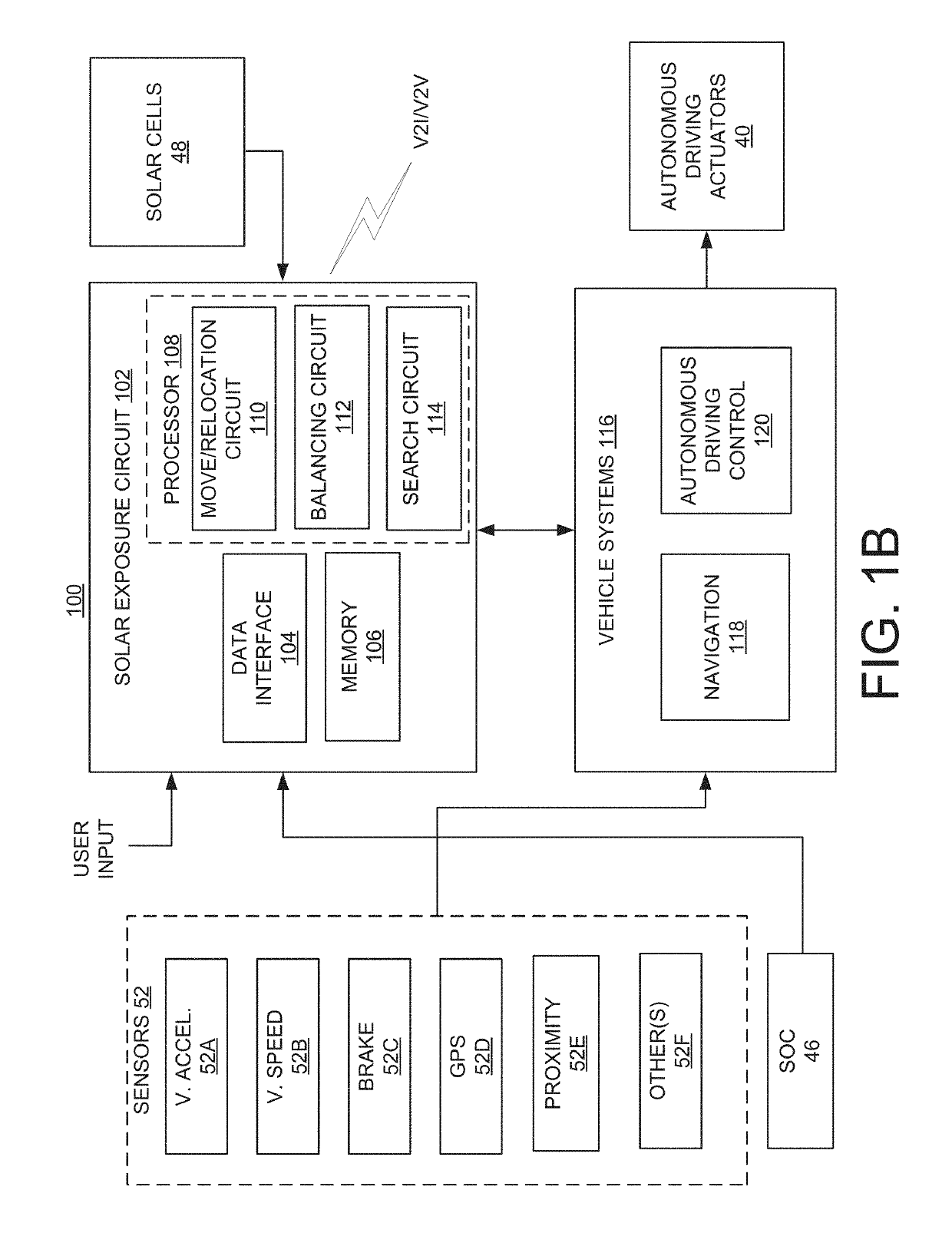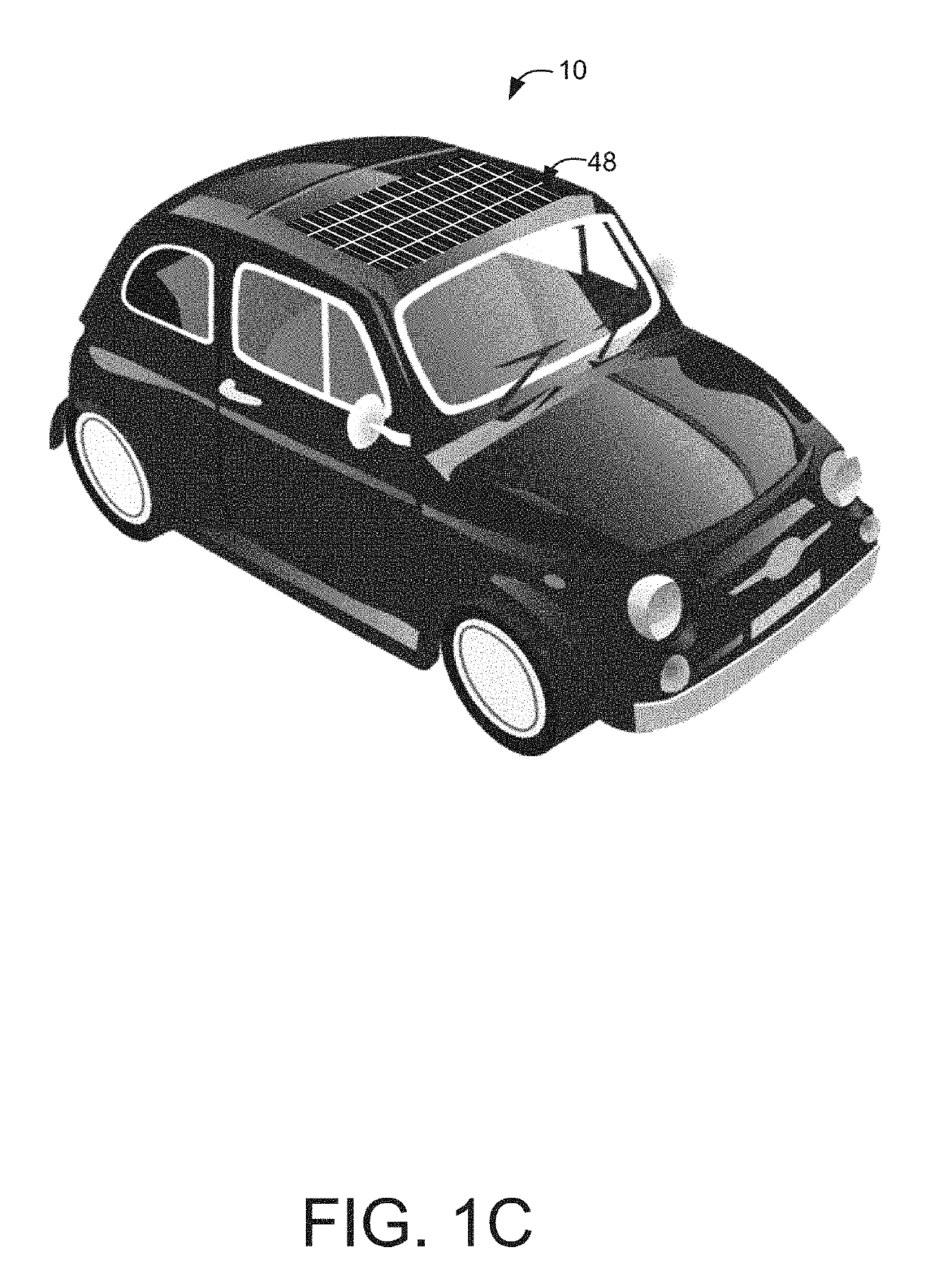Systems and methods of autonomous solar exposure
a solar panel and solar panel technology, applied in the field of automotive systems, can solve the problems of slow speed, affecting the operation of conventional solar panels, and limiting the exposure of solar panels to the sun, and achieve the effect of maximizing the exposure of the solar panel of the vehicl
- Summary
- Abstract
- Description
- Claims
- Application Information
AI Technical Summary
Benefits of technology
Problems solved by technology
Method used
Image
Examples
Embodiment Construction
[0004]In accordance with one embodiment, a computer-implemented method, comprises determining whether a vehicle is in a parked state. Upon a determination that the vehicle is in the parked state, a first location of the vehicle may be determined. The vehicle's power storage device state of charge may be measured. Solar exposure that can be used by a solar panel of the vehicle to recharge the vehicle's power storage device to a desired state of charge relative to the measured power storage device state of charge is determined within a range of operation relative to the first location. An autonomous driving mode of the vehicle is enabled. The vehicle is autonomously operated to travel to one or more locations at which the solar exposure meets energy requirements for recharging the vehicle's power storage device to the desired SOC. The vehicle is automatically parked for a determined time period to recharge the vehicle's power storage device to the desired SOC. The vehicle may then be ...
PUM
 Login to View More
Login to View More Abstract
Description
Claims
Application Information
 Login to View More
Login to View More - R&D
- Intellectual Property
- Life Sciences
- Materials
- Tech Scout
- Unparalleled Data Quality
- Higher Quality Content
- 60% Fewer Hallucinations
Browse by: Latest US Patents, China's latest patents, Technical Efficacy Thesaurus, Application Domain, Technology Topic, Popular Technical Reports.
© 2025 PatSnap. All rights reserved.Legal|Privacy policy|Modern Slavery Act Transparency Statement|Sitemap|About US| Contact US: help@patsnap.com



